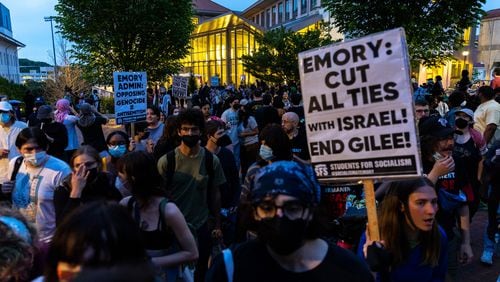“After their marriage, Mama and Papa built their home in Woodstock. Papa went into ‘store keeping’ and Mama began her life of raising eight children over a 20-year period. They built a house off Main Street in town. … The home that they had built had two bedrooms and was not more than a city block from downtown Woodstock. It was an easy walk to town and to church and to school.” – “Precious Memories,” a community history by Sam Reeves.
Backers of a proposed Elm Street Visual Arts Center in the old Reeves farmhouse in downtown Woodstock challenged the community to pony up $100,000 in the month of December to meet the terms of a matching grant so renovations could begin in the new year. They got about $70,000.
Close enough. The Elm Street Cultural Arts Village, the community nonprofit leading the project, broke ground for the rehab in a Jan. 16 ceremony.
“We’re moving forward with construction, even though we have a little more to fund-raise,” said Christopher Brazelton, executive director of the arts center proposed for the 2,500-square-foot building at 113 Elm St. “We’re feeling very optimistic after this year-end campaign.”
Between the “Revive the Reeves” campaign and the city of Woodstock, which has pledged $300,000 in impact fees, $567,899 has been raised or 94 percent of the $600,000 fundraising goal.
The effort started several years ago when a theater group and the Towne Lake Arts Centre merged to pursue their vision for the visual and performing arts hub in downtown Woodstock. The Elm Street Theater today performs in the former First Baptist Church building, now the City Center at 8534 Main St., where the City Council meets.
The Reeves house was built in 1897, the year Woodstock was incorporated. In his book, Sam Reeves talks of his family raising pigs, cows and chickens, growing potatoes, corn and millet, and planting fruit trees for apples, pears, peaches and plums. They had so many other trees on the 12-acre spread, they were self-sufficient in firewood.
A map of the farmstead shows the house, barn, smokehouse, woodshed, hen house, privy and other structures and on one far corner, a “Black Church.” By the early 21st century, the farm was gone, and the house was a vacant eyesore.
Now, it’s to get a rotating artists’ gallery, a 24/7 “Maker’s Space” for local artisans, classrooms, a history center, possibly offices and a podcasting/radio arts studio in the loft area upstairs and a coffee shop on the front porch.
“We’re really excited about the coffee shop,” Brazelton said. “We’re next to the Noonday Creek Trail, so anyone can come in for a cup of coffee and have an art experience.”
Future plans call for a culinary garden with an outdoor kitchen, and a new performing arts venue to replace the church.
“We feel the more the art village is developed,” Brazelton said, “the more it will mean for tourism and a lot of other economic and practical purposes — but beyond that, really, a source of vibrancy for the city.”
Information: www.revivethereeves.org





